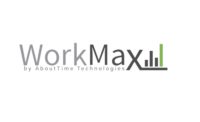The construction industry is scrambling to stay compliant and implement new safety regulations to protect employees from the sudden outbreak of COVID-19. In late April, the Equal Employment Opportunity Commission revised its guidance on the Americans with Disabilities Act to bring clarity to updates from the Center for Disease Control, directing the construction industry to check employees daily for COVID-19 symptoms.
Contractors are rushing to meet the guidelines and many are turning to technology to get it done. Instead of having a more complex situation on their hands where physical files and documents would need to be produced and maintained, a contractor can use a resource management program to easily test, document and share results increasing safety and productivity without compromising anyone’s privacy.
Here is a summary of the new ADA guidelines and how a resource management solution simplifies how private information is handled and protected:
Medical Information Can Be Collected From Healthy and Sick Employees
During a pandemic, employees can be questioned about any of the COVID-19 related symptoms as they enter job sites and if they claim to be sick. Symptoms include shortness of breath, fever, chills, cough and sore throat. But in order to remain in compliance with the ADA, their answers must be maintained in a confidential medical record.
Most employers are requiring screenings before employees enter the jobsite. As such, employees must be paid for waiting to be screened/tested and while they are waiting for results from said screening/test. Employers will also need to have consent from the employee to perform the testing or screening. The speed of which the questionnaire can be taken and any needed tests administered is of utmost importance for an employer. Slow testing will affect profits and labor productivity. Fortunately, a mobile form app allows employees to login and answer COVID-19 screening questions on their own. But, here’s the problem with using a stand-alone mobile forms app collecting COVID-19 health screening data. As stated before, most contractors are already conducting COVID-19 health screenings before employees enter the job site and before an employee has access to their timesheet or time clock on a manual “Punch Clock”. Because of this, employees may not be aware of the need to document their clock-in time at the moment they begin waiting for a screening or test, and this can present issues with wage and hour law compliance.
Employees are required by law to be paid while they are completing health screenings and waiting for their results if they can’t access the jobsite without completing them. With a resource management platform, employees clock in from their mobile device as they are waiting to get screened or tested and then are prompted with health screenings to make sure they’re paid for the time it takes to fill out the health screening form upon clock-in. Similarly, if an employee hits clock-out on his app, it won’t clock him out until the health screening is filled out. The health screening mobile form can be quickly updated to reflect any new COVID-19 symptoms based on recommendations from the CDC.
Employers Can Mandate Medical Tests
Medical testing and screening of employees must be job related and is necessary for business. Due to the COVID pandemic, employers can test employees entering a jobsite for the virus because it is a direct threat to the health of others. The tests and screenings must be accurate and reliable and be administered in such a way as to not be discriminatory. It’s expected that all employees will be screened or tested before they enter the jobsites.
Mobile forms can also assist in tracking the medical results, as the tests themselves take a short amount of time to administer but have a delay before the results are received. The pandemic questionnaire can have a field to capture whether a test has been taken or not. Once the test is completed and the results are received, the form can be updated reflecting the outcome.
If someone tests positive for COVID-19, contractors can easily find all the employees that worked at the job location. A resource management solution automatically GPS stamps each employee at clock-in/-out, and every time they change a task. Using face recognition that compares employee profile photos to the clock-in or -out photos, management can have confidence that they have identified the right employees that would have come into contact with the positive-tested employee. Management can quickly see everyone who worked that day with accurate live field data with GPS stamps and face recognition to determine if they want those employees to get tested or to ask if they came into contact with the positive employee.
All Medical Information Must Be Stored Separately, Including Questionnaires and Tests
The ADA requires that all medical information collected from employees be stored separately from their personal file in a confidential medical file. This includes all questionnaires, self-identifications, test results and temperature checks. This information must be kept private with the same safeguards as any other medical information. In the instance of an employee contracting COVID-19, that information may be shared with public health agencies.
Using real-time mobile forms and with easy-to-use and flexible permissions, a contractor can make sure that the medical information submitted on the forms are only accessible by employees that have a legal business purpose to view the information. Their data remains confidential and can only be accessed by anyone with the appropriate permissions in the software to do so. It’s typical that supervisors and health and safety managers have access to view an employee’s confidential medical information. The permissions to access the confidential medical data can be automated to ensure ADA compliance and the employee’s privacy. For example, if a new health and safety coordinator for the southwest region was hired, they would have access to all the COVID-19 screening forms for all of the employees in the southwest region as soon as they’re hired.
Conclusion
Developing a COVID-19 safety program that’s compliant with the wage and hour laws, ADA and EEOC can be complicated and it is recommended that legal and safety experts be utilized in the creation of any plan. At a minimum, CDC and ADA guidelines are a meaningful start. Once a plan is in place, the implementation should be streamlined with a resource management platform that includes mobile forms prompted on clock-in or -out, robust permissions including automated permission profiles, and live field data tracking.







Report Abusive Comment